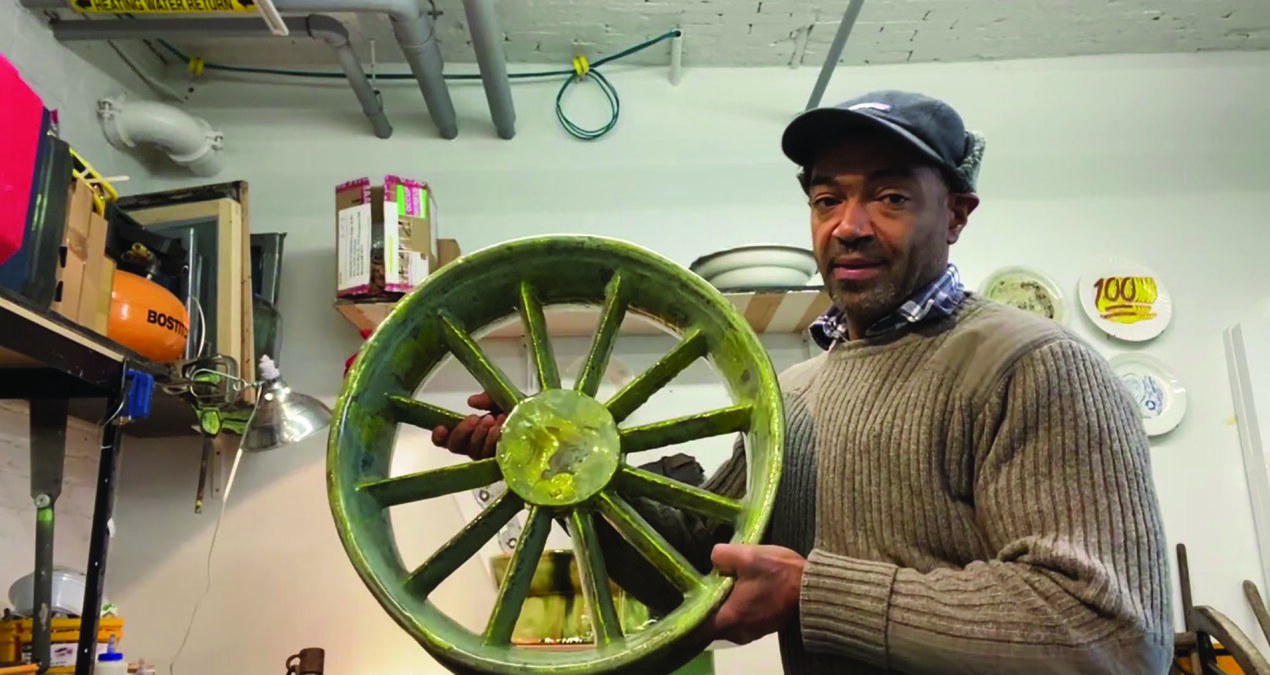AJ Hartwick, Arts & Life Editor–
Justin Coleman, professionally known as Jstn Clmn, has been teaching at Denison since 2018, and is among the most recent crop of professors to be granted tenure.
As a professor in the Studio Art Department, Clmn works as a visual artist outside his teaching duties. Clmn’s work has been on display in spaces ranging from the Denison Museum to the Whitney, and his pieces are always grounded in cultural observations and experiences.
Clmn first began working with ceramics in high school and has continued to specialize in the medium ever since. To Clmn, working with clay allows students to approach problem solving, both with physical materials and abstract ideas, in new and unique ways.
In a more recent exhibition entitled “Razed Here; Raised Here” Clmn explores modernity and urban politics in black communities, incorporating found objects into a collection of porcelain pots to convey the effects of gentrification and urban renewal.
Noting that humans have been working with clay for millenia, Clmn is attracted to the physical process of creating with clay.
“There’s something very natural about using your hands as a way of not only expressing, but learning.”
In a sense, Clmn believes that ceramics appeals to everyone, and that students across different disciplines and courses of study can learn through working with clay. This belief shapes Clmn’s work but also how he structures his courses, which often feature interdisciplinary themes catered to student’s interests.
“In oversimplified terms, working in ceramics is like putting your hands on the earth. I think that is something that all humans can relate to.”
Clmn is a graduate of the University of Delaware and the Rhode Island School of Design, which granted him an education resembling more of a conservatory model than Denison’s liberal arts approach to studio arts education.
“What we do at Denison is more broad, so students get a more well-rounded experience. There’s a real virtue and value to that well rounded kind of experience because students get to relate it to themselves and their own interests.”
Moving forward, Clmn is excited to expand upon his body of work by exploring similar themes in upcoming shows. As for teaching, Clmn wants to introduce new classes which feature more creativity structures and themes. Last year, Clmn taught a class examining aesthetic parallels between ceramics and graffiti and how the two inform one another, and he credits novel ideas like this as opportunities to uncover more surprises in both his own and his student’s work.

